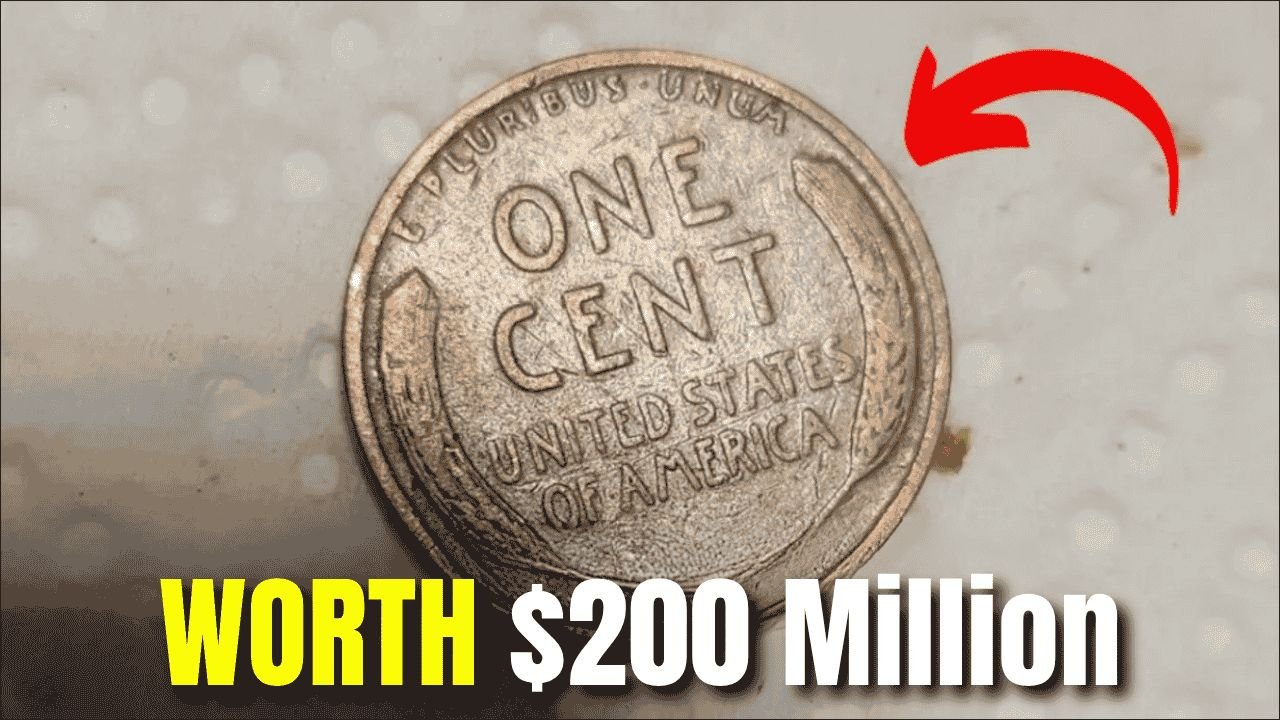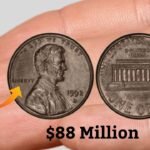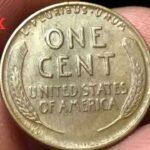The Lincoln Wheat Penny Valued at $200 Million, Still in Circulation!
You might have handled one without realizing it — a simple, copper coin tucked away in your change jar or piggy bank. But what if that ordinary-looking penny was worth more than a luxury car, a mansion, or even a private island? The Lincoln Wheat Penny, a humble piece of American history, is now rumored to be valued at a staggering $200 million, and shockingly, it’s still out there in circulation. Yes, it could be hiding in your pocket right now!
This article dives deep into what makes this particular coin so special, how it’s still moving around unnoticed, and what steps you can take to see if you’re sitting on a jackpot.
A Look at the Lincoln Wheat Penny: Small Coin, Big Legacy
First minted in 1909 to honor President Abraham Lincoln’s 100th birthday, the Lincoln Wheat Penny replaced the Indian Head cent and became one of the most iconic coins in U.S. history. Designed by Victor D. Brenner, it features a portrait of Lincoln on the front and two wheat stalks flanking the words “ONE CENT” on the back — hence the nickname “Wheat Penny.”
What makes these coins fascinating is not just their design, but the history they carry. Produced until 1958, these pennies have witnessed World Wars, the Great Depression, and social revolutions — making them a favorite among coin collectors and history lovers.
Why Is This Specific Lincoln Penny Worth $200 Million?
So, what transforms a one-cent coin into a $200 million treasure?
The staggering value is tied to rarity, errors, historical context, and the material composition of specific versions of the Lincoln Wheat Penny. The coin in question is likely a 1943 bronze Wheat Penny, a mistake minted during World War II when pennies were supposed to be made from steel to conserve copper for wartime needs.
Only a handful of these bronze 1943 Wheat Pennies exist, as most were melted down or never released. One near-perfect specimen was graded as MS-66 (Mint State) by a top grading authority — a virtual unicorn in the numismatic world. That condition and rarity pushed collectors and investors into a bidding war that has driven the valuation into the hundreds of millions.
What Traits Boost the Value of a Lincoln Penny?
Here’s a quick rundown of key attributes that determine a Lincoln Wheat Penny’s worth:
| Feature | Why It Matters |
| Mint Year | Key years like 1909-S VDB, 1914-D, 1943 bronze |
| Mint Mark | Coins with “S” (San Francisco) or “D” (Denver) can be rarer |
| Metal Composition | Bronze 1943 pennies are highly valuable |
| Condition/Grade | Higher grades (MS-65 and above) command top dollar |
| Errors | Double-die strikes or off-center errors add value |
| Historical Significance | War-era coins often have higher appeal |
Still in Use: How Can a $200 Million Penny Be Circulating?
It sounds unbelievable, but it’s true — a few of these ultra-rare pennies have never been officially accounted for. Since many look just like ordinary wheat pennies, they’ve likely slipped through decades of coin exchanges, piggy banks, vending machines, and cash drawers unnoticed.
Unlike dollar bills or marked high-value assets, coins don’t always get pulled from circulation unless someone identifies their value. The average person simply doesn’t check the year and mint mark of every penny they receive, which is why even a $200 million penny could still be hiding in plain sight.
How to Check If You’re Holding a Fortune in Your Pocket
Before you toss your spare change into the tip jar, here’s how to inspect your pennies like a pro:
- Look for the Wheat Design: Flip it over — if you see two wheat stalks instead of the Lincoln Memorial, you’ve got a Wheat Penny.
- Check the Year: Target key dates like 1909-S VDB, 1914-D, and 1943.
- Use a Magnet: The 1943 steel penny will stick to a magnet, but the ultra-rare bronze version won’t.
- Examine Mint Marks: Coins with “S” or “D” under the date can be more valuable.
- Inspect for Errors: Use a magnifying glass to spot doubling or strike mistakes.
- Get It Graded: If you suspect value, send it to a reputable coin grading service for authentication.
Even if your penny isn’t the $200 million one, it could still be worth thousands depending on its traits.
Why Coin Enthusiasts Are Obsessed with the Lincoln Wheat Penny
The nostalgia, the hunt, and the potential payoff all make the Lincoln Wheat Penny a top-tier collectible. For many, it’s not just about money — it’s about history in your hand. Each coin is a time capsule from an era gone by.
Collectors love the thrill of the search and the story behind each rare find. And with the added possibility of discovering an ultra-rare coin, the Lincoln Wheat Penny has become something of a legend in the coin world.
What to Do If You Discover a Rare Penny
So, you’ve found what looks like a promising penny — now what?
- Don’t Clean It – Cleaning can actually reduce its value by damaging its natural patina.
- Handle With Care – Use gloves or hold it by the edges to avoid oils from your skin.
- Get an Expert Opinion – Visit a trusted numismatist or coin dealer.
- Authentication Is Key – Have it professionally graded and certified.
- Consider Auctioning – Once authenticated, auction houses can help you find high-paying collectors.
- Stay Informed – Keep tabs on coin news — the market is always shifting.
Your ordinary coin could be your ticket to generational wealth — just make sure you take the right steps.
Frequently Asked Questions
Q1: What year is the most valuable Lincoln Wheat Penny?
The 1943 bronze penny holds the record as one of the most valuable, with one example worth up to $200 million.
Q2: Can I find a rare penny in my everyday change?
Yes, rare Wheat Pennies — including 1943 bronze and 1909-S VDB — are still discovered in circulation.
Q3: What makes a penny valuable?
Age, mint mark, material, condition, and error varieties all affect a penny’s value.
Q4: Where can I sell a rare penny?
Reputable coin dealers, numismatic auctions, or collectors’ forums are great places to start.
Q5: Should I clean my old pennies to make them look better?
No — cleaning can significantly reduce a coin’s value.
Final Thoughts
While most of us pass over pennies without a second glance, the Lincoln Wheat Penny teaches a powerful lesson — that immense value can be hidden in the simplest places. Whether it’s tucked in a wallet, a couch cushion, or a forgotten coin jar, that tiny copper disc might just change your life.
So next time you hear that familiar clink of change in your pocket, take a moment. You never know — that penny could be worth $200 million.




